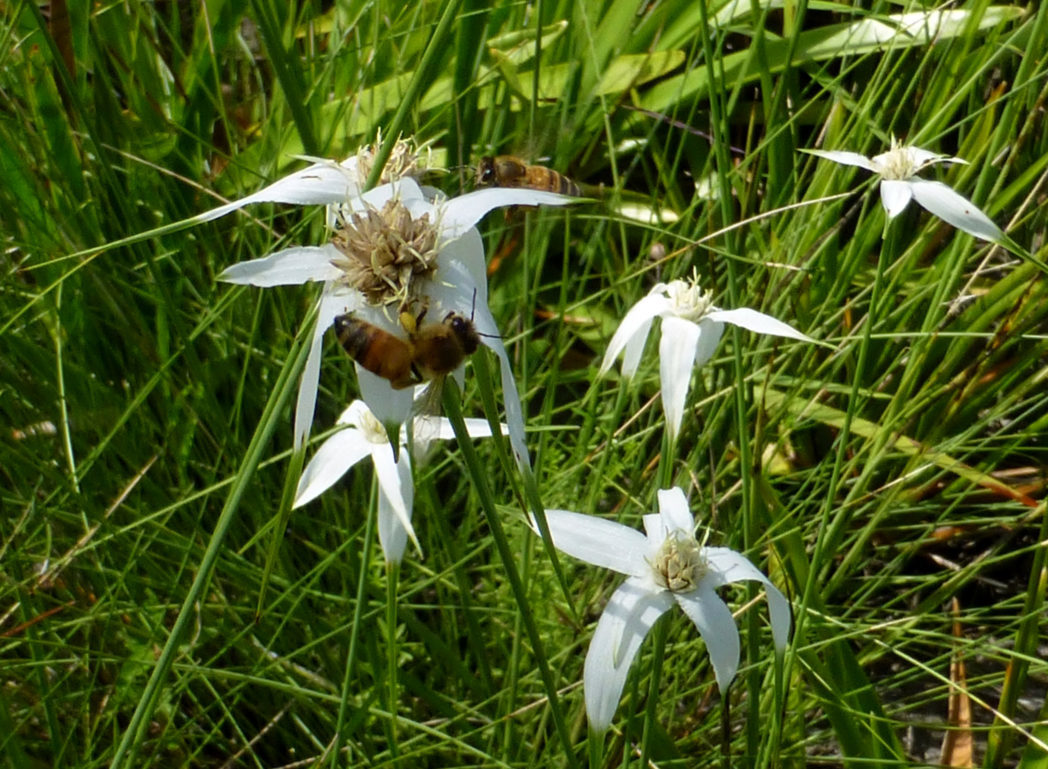Starrush whitetop
Pictured above: Honey bee on Starrush whitetop (Rhynchospora colorata). Photo by Eleanor Dietrich. Click on terms for botanical definitions. View post as a PDF.
Starrush whitetop (Rhynchospora colorata) is a unique and long-lived perennial sedge that occurs naturally in wet flatwoods, wet prairies, swales and roadside ditches. It is known (and named) for its striking bracts that are often mistaken for a daisy-like flower. The bracts are white with green tips, giving the appearance of having been spray-painted. The inflorescence is actually a dense cluster of small spikes, each bearing many tiny flowers. Leaf blades arise from the base of the plant and are long and tapering.
Like most sedges, Starrush whitetop stems are triangular. But unlike most sedges and other grass-like species, which are wind-pollinated, Starrush whitetop is pollinated by insects that are attracted to the showy bracts.
The genus name comes from the Greek rhynchos (beak) and spora (seed) and refers to the plant’s beaked fruit or achene.
Family: Cyperaceae
Native range: Nearly throughout Florida; less frequent in Panhandle
To see where natural populations of starrush whitetop have been vouchered, visit www.florida.plantatlas.usf.edu.
Hardiness: Zones 8A–10B
Lifepsan: Perennial
Soil: Moist to inundated sand, loam or muck
Exposure: Full sun to partial shade
Growth habit: 1-2’
Propagation: Seeds, division
Garden tips: Starrush whitetop can make an interesting groundcover in moist landscapes and also works well in water gardens. It can spread if allowed.
Plants are often available at nurseries that specialize in native plants. Visit PlantRealFlorida.org to find a native nursery on your area.

